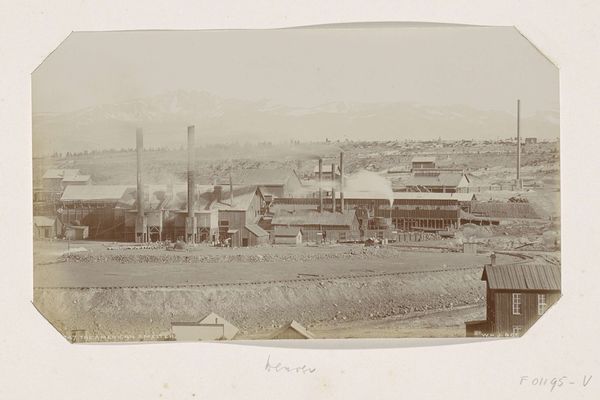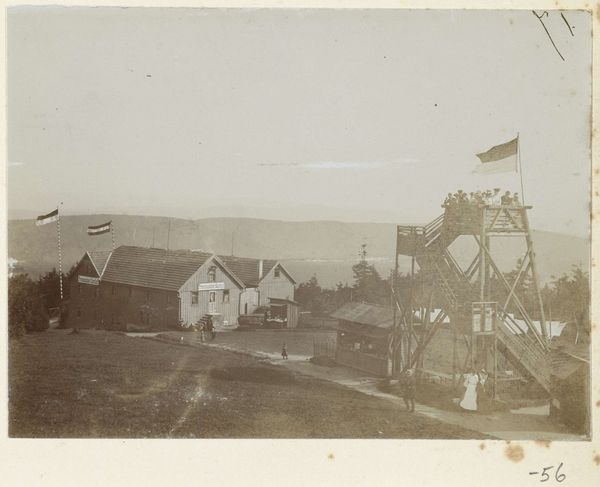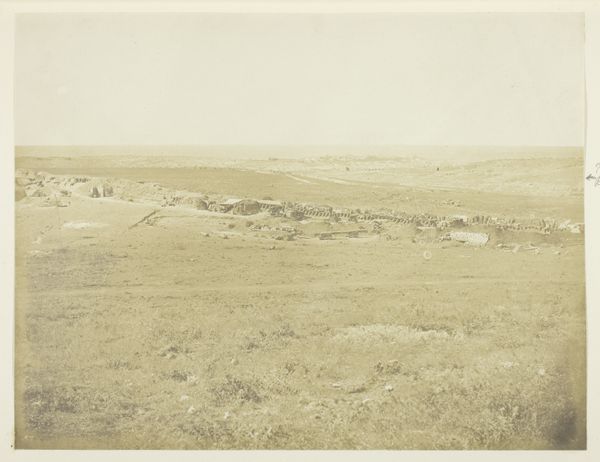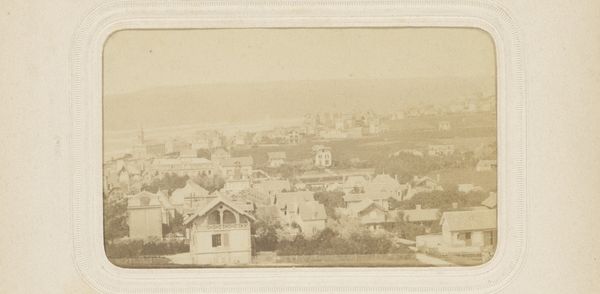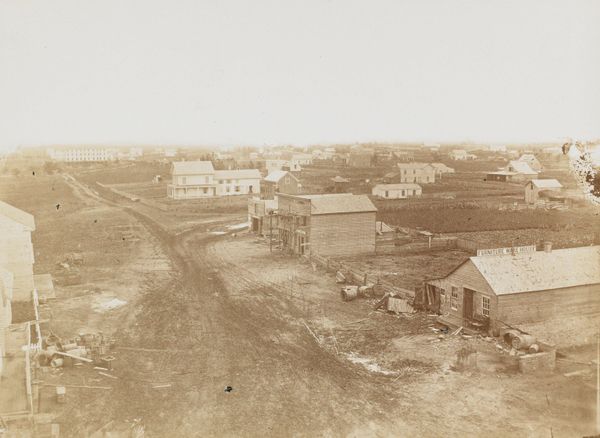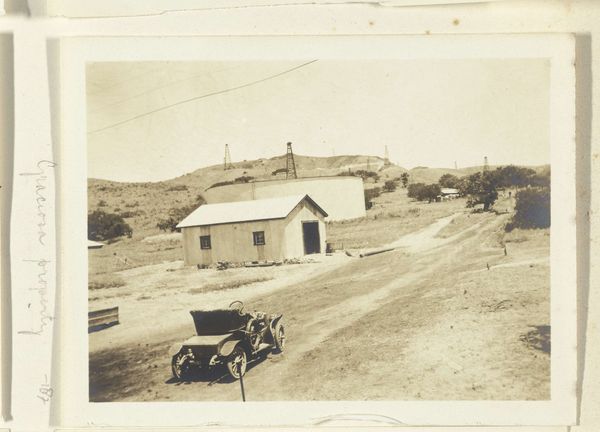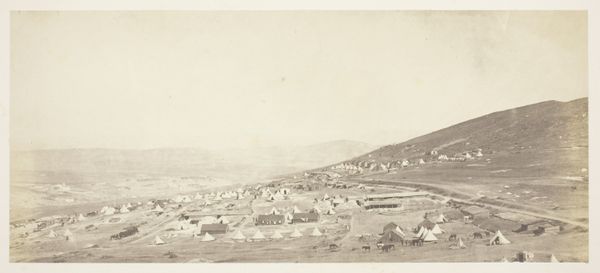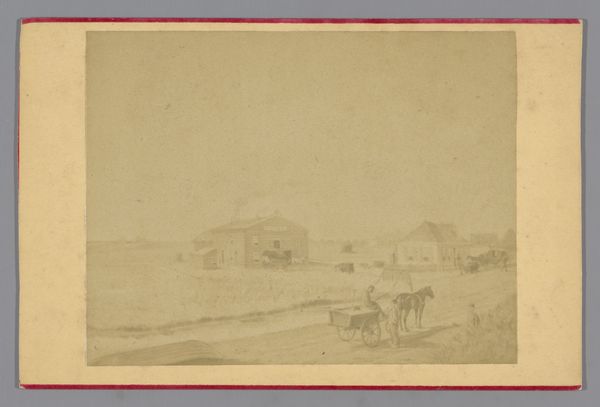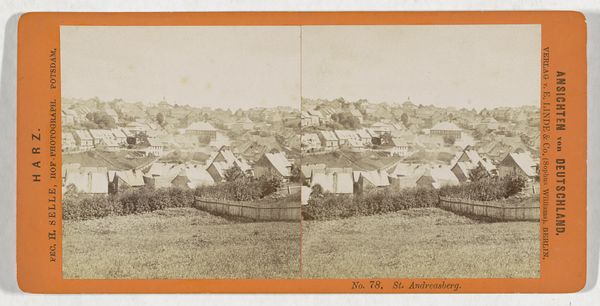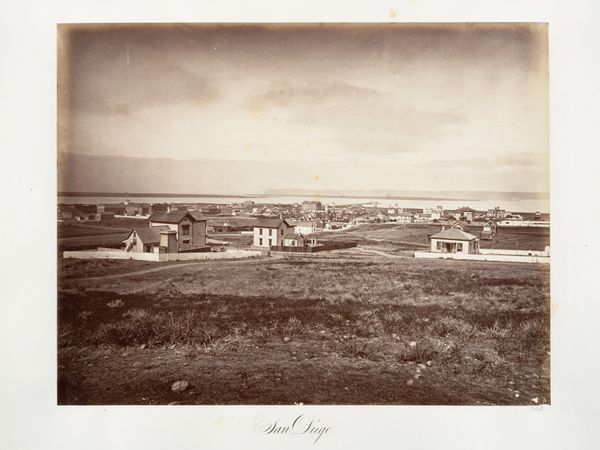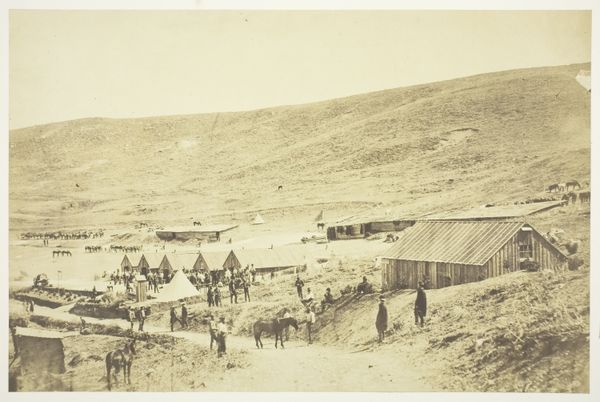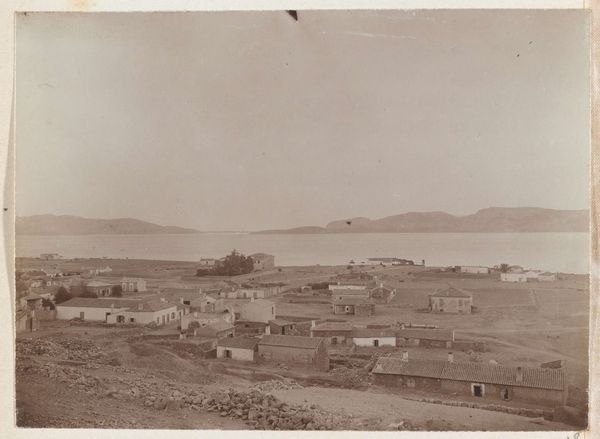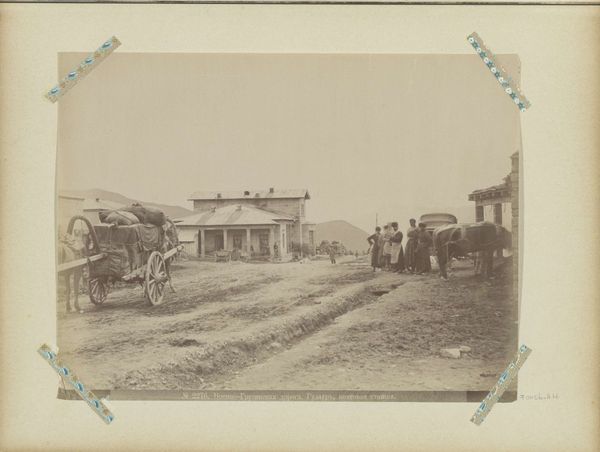
photography, albumen-print
#
impressionism
#
landscape
#
photography
#
horse
#
cityscape
#
albumen-print
#
realism
Dimensions: height 104 mm, width 63 mm
Copyright: Rijks Museum: Open Domain
Curator: It's an albumen print, dating roughly from 1860 to 1900. The title given is "Dorpsgezicht met op de voorgrond een paard met wagen" which translates to "Village View with a Horse and Cart in the Foreground". Editor: A sepia-toned reverie, almost ethereally soft. There's a stillness to it, like a forgotten moment suspended in time. What sort of village are we seeing here? Curator: It's a quintessential rural European scene. The horse and cart obviously represent a now lost form of labor and transport. Its stillness suggests a peaceful existence connected directly to the land, and it reflects how communities were arranged and provisioned back then. Editor: Absolutely. The horse and cart, burdened with cargo, serves as a symbolic vessel bridging past and present, reminding us of a bygone era where work and nature were intricately intertwined. What would that cargo represent? Curator: Provision, most likely. Everyday sustenance that allowed communities to form and grow, reflecting self-reliance and inter-dependency, contrasting the current emphasis on globalization and commodity exchange. Editor: There's a powerful element of cultural memory embedded in those quiet rooftops too. Each home holds generations of untold stories, their subtle forms anchoring the collective identity to a tangible, almost dreamlike realm. Does the scene strike you as romanticised or realistically captured, based on its symbolic charge? Curator: Considering that it's a photograph from this era, and based on albumen prints as a medium, the aim would certainly lean towards capturing the reality. Although, of course, any such choice is a manipulation of the view, framing, perspective. The composition subtly emphasizes rural harmony, a shared life close to nature, reflecting contemporary sensibilities towards idyllic village life even then. Editor: That balance between objectivity and interpretation shapes how the community perceives its place within history, offering reflections about transformation as the town transitions into the future. What could this transformation possibly signify? Curator: It could possibly mean a rupture with traditions or a reminder of shared inheritance. This transformation might echo anxieties tied to modern progress. The artist's choice to fix this precise image is already, inescapably, an act loaded with political and social implications. Editor: Absolutely, each street, cart, house tells a story and it is an important reminder of our communal histories. The artwork serves as a poignant relic prompting further thought, almost challenging our interpretation.
Comments
No comments
Be the first to comment and join the conversation on the ultimate creative platform.
